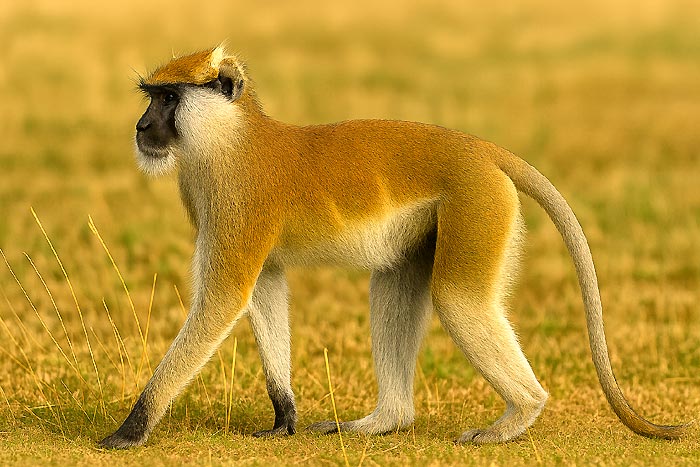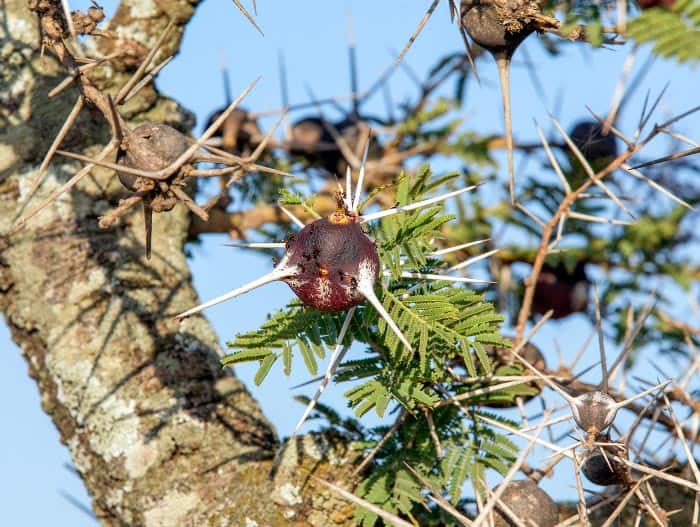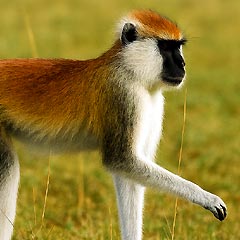
| Animalia | Primates | Cercopithecidae | Erythrocebus | Erythrocebus baumstarki |
The southern patas monkey (Erythrocebus baumstarki) is a critically endangered primate species endemic to East Africa, primarily found in Tanzania. Recognized for its distinct geographical isolation and unique pelage coloration, this monkey is currently facing severe threats to its survival. Historically widespread, the southern patas monkey’s range has dramatically shrunk, raising serious conservation concerns.
Table of Contents
Southern Patas Monkey Distribution
Southern Patas Monkey Characteristics
Southern Patas monkeys are slender, long-limbed primates with pronounced sexual dimorphism.
- Adult males weigh between 5.4 and 18.0 kg, whereas females usually only weigh up to 8.0 kg.
- They exhibit a distinctive pelage coloration: their noses and mustaches are black, crowns are pale rufous and white, and the dorsum is reddish-brown. Shoulders and thighs are dark grey or blackish. These characteristics clearly distinguish this species from other types of patas monkeys.
- Southern patas monkeys live in one-male, multi-female social groups, where males disperse early and females remain in natal groups.
- Known for their shy and elusive behavior, these primates often maintain large distances between individuals within their groups, which aids their anti-predator strategy and foraging efficiency.
Habitat
Historically, the southern patas monkey inhabited a large area stretching approximately 66,000 square kilometres in central northern Tanzania and southern Kenya. Today, its remaining range is drastically reduced to approximately 9,700 square kilometres. Within protected areas of the western Serengeti ecosystem, primarily Serengeti National Park, Ikorongo Game Reserve, and Grumeti Game Reserve.
- These monkeys prefer open acacia woodland, particularly areas dominated by the whistling thorn (Acacia drepanolobium).
- They avoid dense forests, open grasslands, and riverine habitats. Altitudinally, their distribution ranges from 1,250 to 1,450 meters above sea level, where annual rainfall is between 800 and 1,150 mm, providing suitable climatic conditions for their preferred habitat.
What Do Southern Patas Monkeys Eat?

The southern patas monkey’s diet consists mainly of plant material and arthropods.
- Their primary food source is the whistling thorn, from which they feed on its fruits, seeds, flowers, and gum.
- They also consume various insects, contributing protein to their diet.
- These eating habits closely tie their survival to habitats dominated by the whistling thorn, making habitat preservation crucial for their continued existence.
Southern Patas Monkey Predators
Predation threats to the southern patas monkey include large carnivores and birds of prey native to the Serengeti region.
- Lions, leopards, cheetahs, hyenas, and domestic dogs are known predators.
- Their terrestrial lifestyle and open habitat preferences expose them to higher predation risks, prompting them to maintain vigilance and respond with swift flight.
Human activities have exacerbated predation pressures, especially due to increased encounters with domestic animals and poachers within and around protected areas.
Breeding Behavior
Southern patas monkeys exhibit reproductive behaviors similar to their better-studied relative, the eastern patas monkey.
- Females reach sexual maturity around 3 years old, often giving birth annually.
- Births typically occur between November and February, coinciding with the driest season, which suggests an evolutionary adaptation to minimize infant mortality due to predation or environmental factors.
- Males reach sexual maturity around 5 years of age and disperse from natal groups as juveniles or subadults, often forming temporary bachelor groups or remaining solitary. These behavioral strategies are crucial for preventing inbreeding and fostering genetic diversity within groups.
Ecological Importance
The southern patas monkey plays a significant ecological role, primarily through seed dispersal and the control of predation.
- By feeding on acacia seeds and fruits, they facilitate seed dispersal, aiding in the regeneration of vegetation.
- Their consumption of insects helps regulate arthropod populations, maintaining ecological balance.
- Additionally, as prey animals, they contribute to the survival of local predator populations, underscoring their integral position within the Serengeti ecosystem’s food web.
Preservation of this species thus directly supports broader biodiversity conservation objectives in the region.
Southern Patas Monkey Fun Facts
- Southern patas monkeys can reach speeds of up to 55 km/h, making them the fastest primates.
- They are highly terrestrial, spending much of their time on the ground.
- Their groups often scatter widely, maintaining distances up to 800 meters apart.
- These monkeys rarely use the same sleeping site on consecutive nights.
- Despite their colorful appearance, they are incredibly elusive and difficult to observe.
- They typically avoid dense vegetation and open grasslands.
- It is estimated that there are just 100 to 200 individuals of this species left in the wild.
The southern patas monkey stands at a critical juncture, facing an alarming decline due to rapid habitat loss and human encroachment.
Urgent conservation efforts are crucial to reversing this trend, with a focus on habitat protection, anti-poaching measures, and raising awareness both locally and globally. Continued research, habitat restoration, and effective enforcement within protected areas could significantly bolster this species’ chances for survival.
![]()













